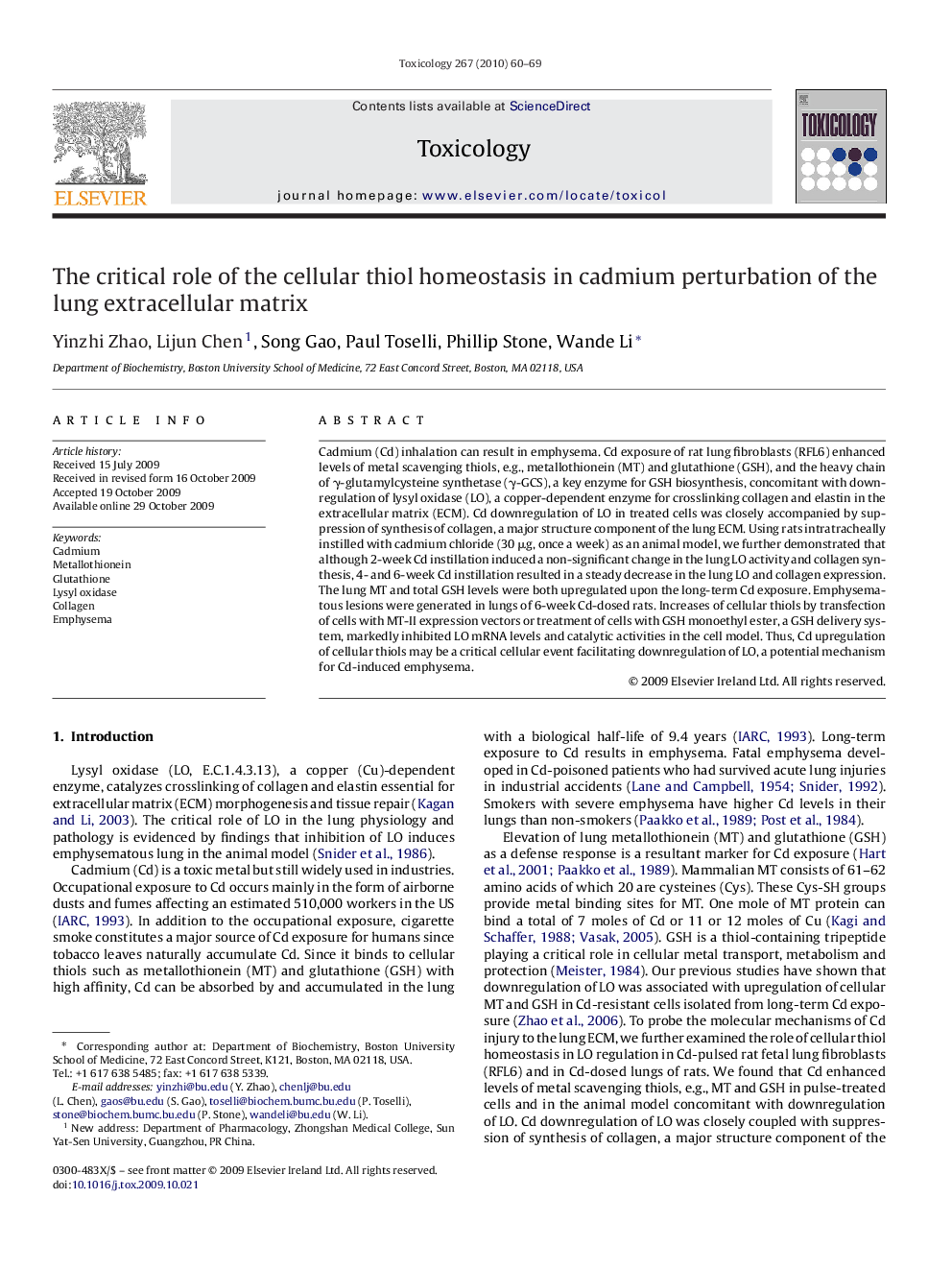| Article ID | Journal | Published Year | Pages | File Type |
|---|---|---|---|---|
| 2596550 | Toxicology | 2010 | 10 Pages |
Cadmium (Cd) inhalation can result in emphysema. Cd exposure of rat lung fibroblasts (RFL6) enhanced levels of metal scavenging thiols, e.g., metallothionein (MT) and glutathione (GSH), and the heavy chain of γ-glutamylcysteine synthetase (γ-GCS), a key enzyme for GSH biosynthesis, concomitant with downregulation of lysyl oxidase (LO), a copper-dependent enzyme for crosslinking collagen and elastin in the extracellular matrix (ECM). Cd downregulation of LO in treated cells was closely accompanied by suppression of synthesis of collagen, a major structure component of the lung ECM. Using rats intratracheally instilled with cadmium chloride (30 μg, once a week) as an animal model, we further demonstrated that although 2-week Cd instillation induced a non-significant change in the lung LO activity and collagen synthesis, 4- and 6-week Cd instillation resulted in a steady decrease in the lung LO and collagen expression. The lung MT and total GSH levels were both upregulated upon the long-term Cd exposure. Emphysematous lesions were generated in lungs of 6-week Cd-dosed rats. Increases of cellular thiols by transfection of cells with MT-II expression vectors or treatment of cells with GSH monoethyl ester, a GSH delivery system, markedly inhibited LO mRNA levels and catalytic activities in the cell model. Thus, Cd upregulation of cellular thiols may be a critical cellular event facilitating downregulation of LO, a potential mechanism for Cd-induced emphysema.
